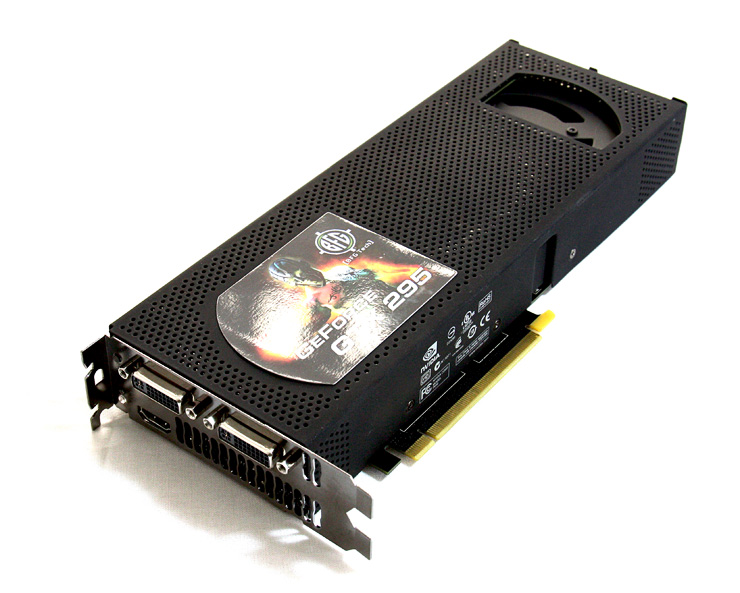GTX 295 Technology
Dual-GPU based graphics cards... the past few years we've seen them a couple of times. The last one released from team green (NVIDIA) was their GeForce 9800 GX2. By itself a pretty interesting card. Though every now and then also haunted by driver issues. This is the reality of any multi-GPU solution really. Rendering a game with multiple graphics processors is increasingly more difficult opposed to using just one GPU.
And I know I have said this many times already, this is why typically I prefer a single GPU based high-end graphics card over a dual-GPU based solution, that doesn't mean though that things have improved over the years. The biggest positive for the GTX 295 for example is that it can continue on existing technology; SLI. And it's exactly what is happening inside that GTX 295 graphics card... the two GPUs are bridged and SLI takes place internally, rendering your games based on profiles in the GeForce drivers, like alternate frame rendering etc.
Sure, there are some snags to Multi-GPU based products though. Typically NVIDIA uses two PCBs which adds more overall cost to the design. Secondly, and that goes for any multi-GPU based system, you can double up everything. This means you now have two GPUs that need to get rid of their heat, which requires extra cooling. You'll need more PSU capacity, you'll need good airflow inside that system. So yeah, not only performance doubles up, everything doubles up. And that also goes for the innards of the graphics card just as well.
Now the GTX 295 is a bit of a weird combo. See, it has the memory volume and frequency of two GTX 260 cards yet the raw shader processor horsepower of two GeForce GTX 280 cards.
Memory: 1792 MB (896 MB per GPU)
Shaders processor: 240 per GPU, 480 in total
Core frequency: 576 MHz (Texture and ROP units)
Shader processor: 1242 MHz
So that makes it a bit of a hybrid in between two GTX 260 and 280 graphics cards. One thing is a fact though, it's an awful lot of computing power for sure.
Quick note for the true geeks: Each GPU features seven ROP and framebuffer partitions. Each ROP partition contains four ROP units, providing each GPU with 28 ROP units. Each framebuffer partition is connected to 128 MB of memory, totaling 896 MB of video memory for each GPU, thus times two. Total number of Texture Filtering Units: 160 (80x2).

